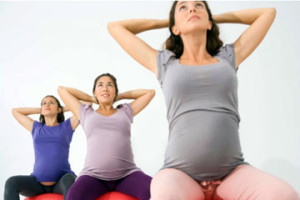Pregnancy affects a woman’s regular workouts. Should a pregnant woman dial down her cardio regimen or still engage in Pilates at Curves gym? Would particular gym equipment be off-limits? Any changes in a pregnant woman’s workout will partly depend on the kind of fitness level she has, which trimester she is in, and how she generally feels. A pregnant woman should not avoid the gym or halt her workouts. As to gym equipment, if one becomes uncomfortable for the pregnant woman to use, there are always others to try.
Know Prenatal Guidelines for All Workouts
Knowing prenatal guidelines to the use of treadmill equipment and treadmill workouts can help a pregnant woman find treadmill walking or running enjoyable. First of all, a consultation with your obstetrician-gynecologist would be highly advisable before embarking on a workout. Listening to your body is another important thing for consideration. Taking into account basic safety precautionary measures is another. Dizziness, feeling faint or shortness of breath should make you stop and rest for a while.
Remember that you are not on that treadmill because you’re training for a competition or trying to lose weight; what you’re after is overall wellness and health. Start slow with your workout to avoid any potential injury as well as remain safe throughout your pregnancy. Regular exercise during your pregnancy can considerably minimize muscle or joint aches and constipation, help you get better rest, and lower the risk of acquiring gestational diabetes or developing depression.
Why Pregnancy Shouldn’t Keep You Away from the Gym
 A toned and fit body during pregnancy will help you bounce back faster in getting your body in shape after delivery. Signing up for prenatal exercise sessions at a gym not only helps you bond with other expectant mothers over stories of swollen feet, hemorrhoids, and heartburn but also provide you with emotional support.
A toned and fit body during pregnancy will help you bounce back faster in getting your body in shape after delivery. Signing up for prenatal exercise sessions at a gym not only helps you bond with other expectant mothers over stories of swollen feet, hemorrhoids, and heartburn but also provide you with emotional support.
Assuming that you have informed the gym instructor of your condition, the intensity of your workout will obviously be adjusted for a decrease in intensity and range of movement or motion. Good gym instructors/trainers would know which exercises on gym equipment are doable and safe for pregnant women; highly-choreographed exercise or dance classes, for instance, will require a heightened sense of body balance from you as well as quick directional body changes and must be shelved off for a while.
Pilates is Okay but with Certain Limitations
Pilates is possible for you but may prove problematic after your first trimester since most of the mat classes would involve prolonged periods of time lying on your back. Pilates, however, can be helpful in maintaining the tone of your abdominal muscles which support your belly as it grows during your pregnancy. Pilates also decreases back pain and strengthens your pelvic muscles to help you push down during labor.
If you decide continuance of your Pilates classes, support your spine with an angled piece of foam which most Pilates studios have, albeit not all gyms provide this, to keep your head’s level higher than your belly’s. With this spine support, you would still be able to do upper body exercises as well as those body movements such as side-lying leg work and stretches.
Yoga and Water Aerobics
 Yoga is another workout a pregnant woman can do. For safety reasons, certain yoga twists and movements which tug on the belly must be avoided during your second trimester. Movements which need you to lie down for long periods of time as well as inversions such as shoulder or headstands should be avoided as well.
Yoga is another workout a pregnant woman can do. For safety reasons, certain yoga twists and movements which tug on the belly must be avoided during your second trimester. Movements which need you to lie down for long periods of time as well as inversions such as shoulder or headstands should be avoided as well.
Water aerobics is yet another form of workout that is relatively safe during pregnancy. Water aerobics is increasingly becoming popular among women in their third trimesters of pregnancy. This is one workout which doesn’t require strenuous activity on your part, very little chance of you slipping, falling or tripping, and no possibility of overheating your body and raising your blood pressure.
Maintaining Muscle Tone During Pregnancy
Unless your doctor restricts you, engage in cardiovascular training to improve your heart and lungs during pregnancy and even after delivery. You should get 150 minutes, on the average, of aerobic activity at a level between moderate and intense every week. Contrary to what you may have heard, pregnant women can safely use elliptical trainers, treadmills, and bicycles at gyms such as Planet Fitness. Ensure, however, that you maintain your heart beat at the rate of 140 beats a minute to avoid overheating.
Maintain your muscle tone while pregnancy with supervised weight training. Two to three sets of lifting dumbbells with between 10 and 12 repetitions each can significantly help you tone your arm and shoulder muscles. The hormone relaxin helps loosen up a pregnant woman’s body joints, muscles, and ligaments in anticipation of labor and subsequent childbirth. Lifting more than 15 pounds of weights, however, is prohibited for a woman at any given trimester of her pregnancy.
